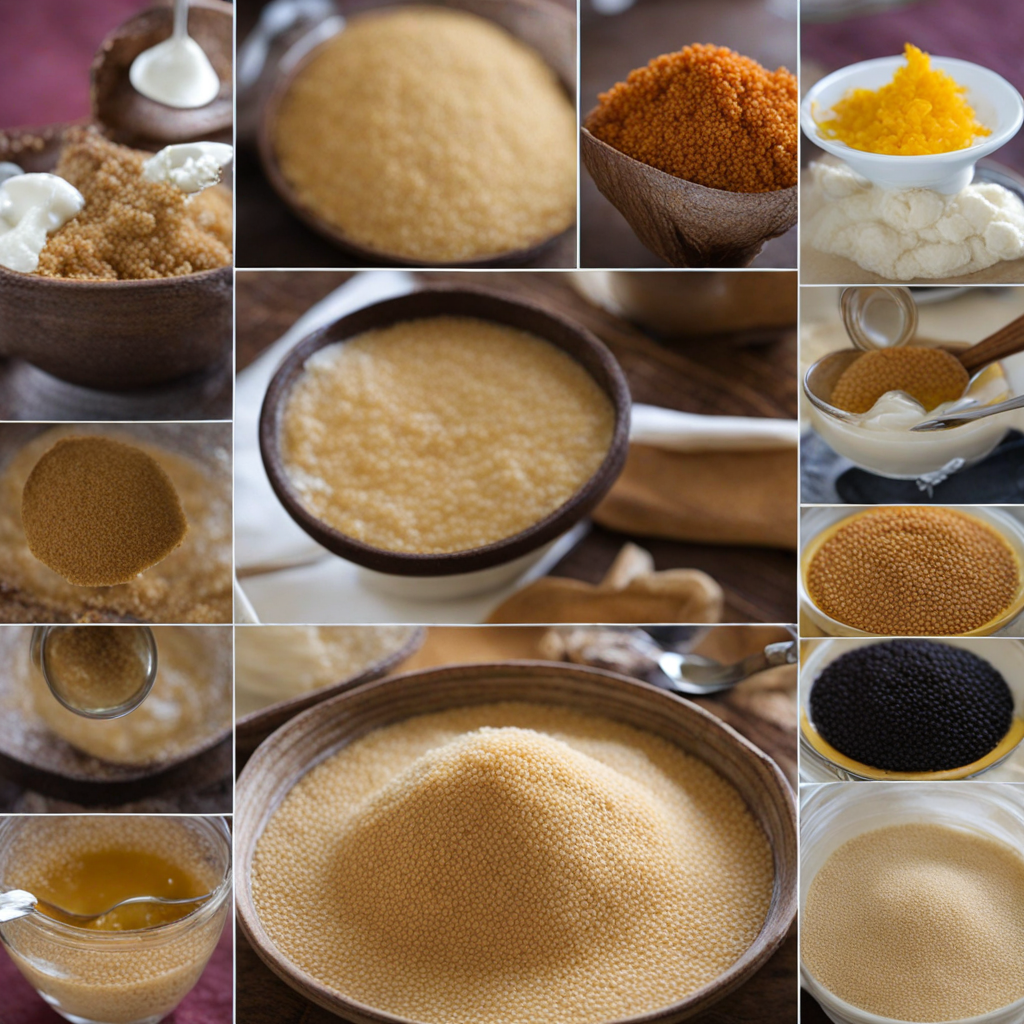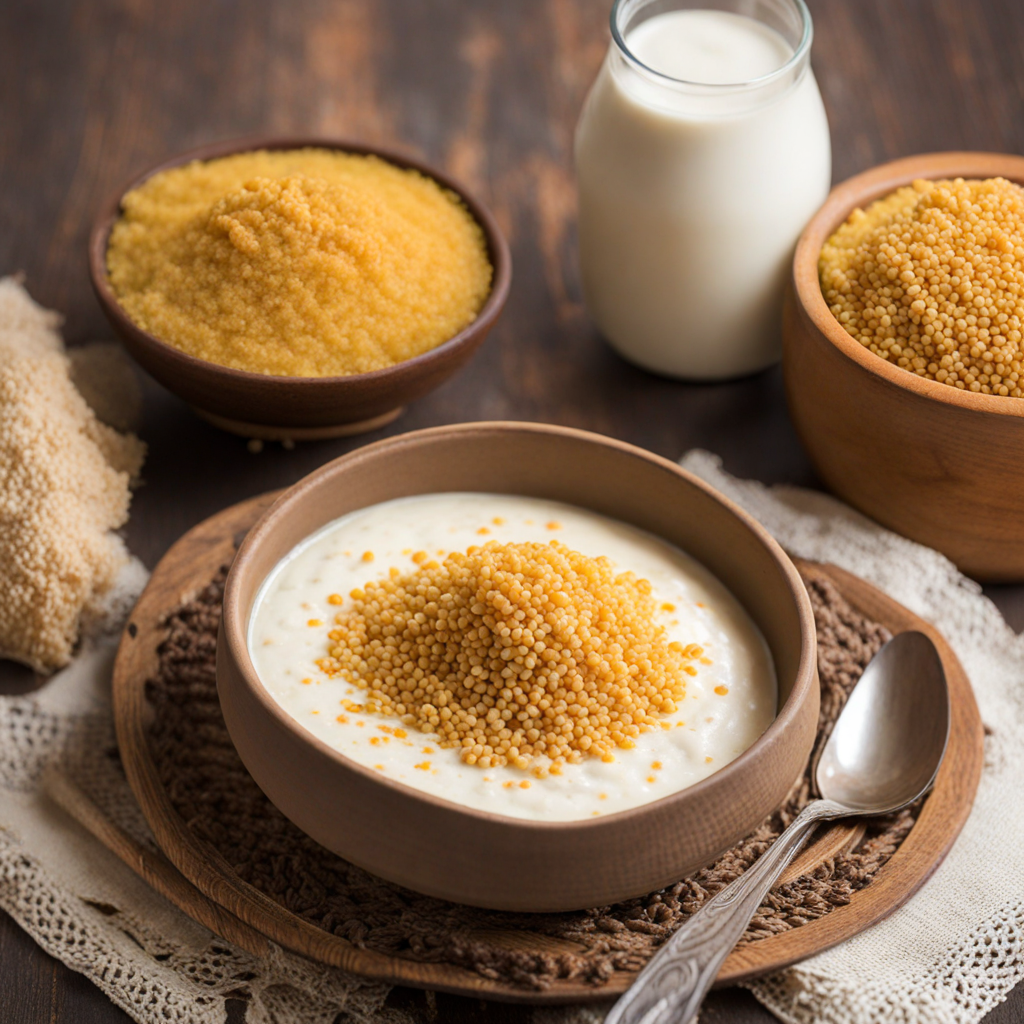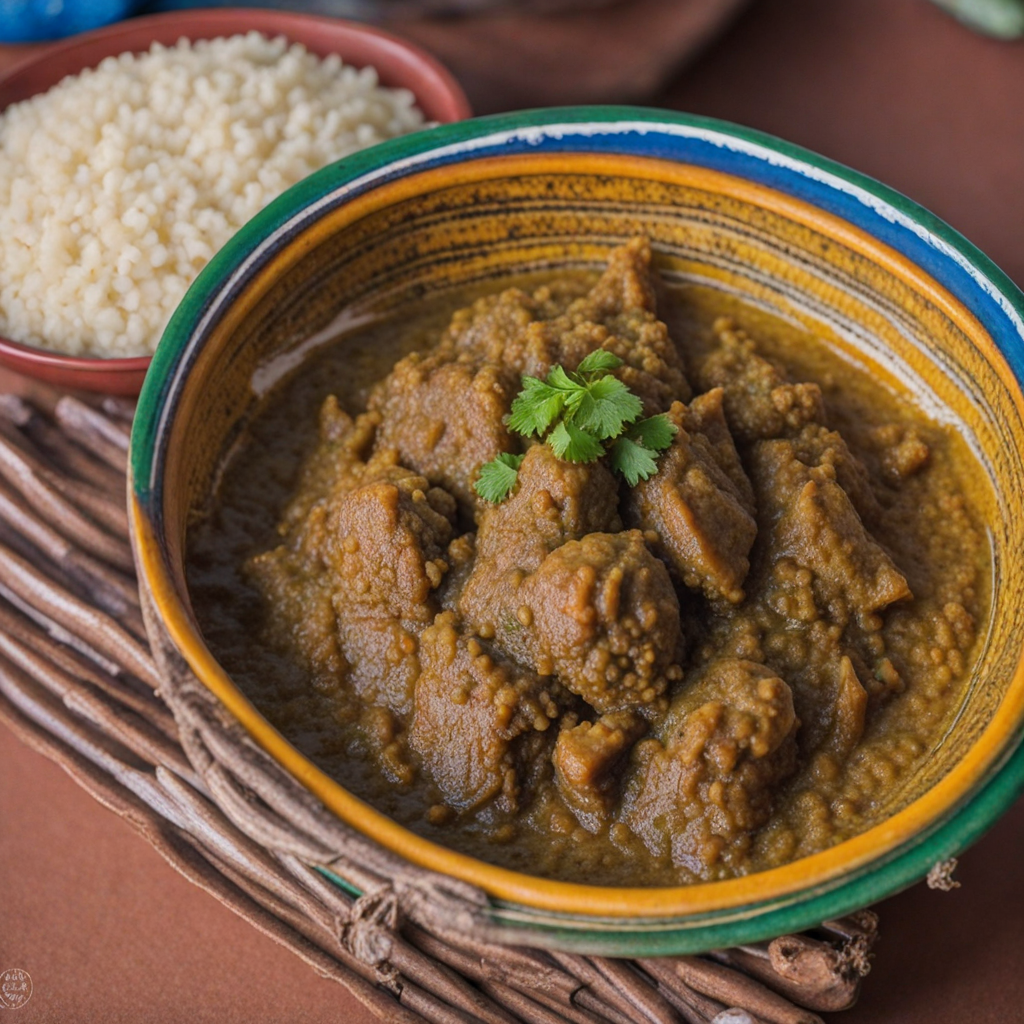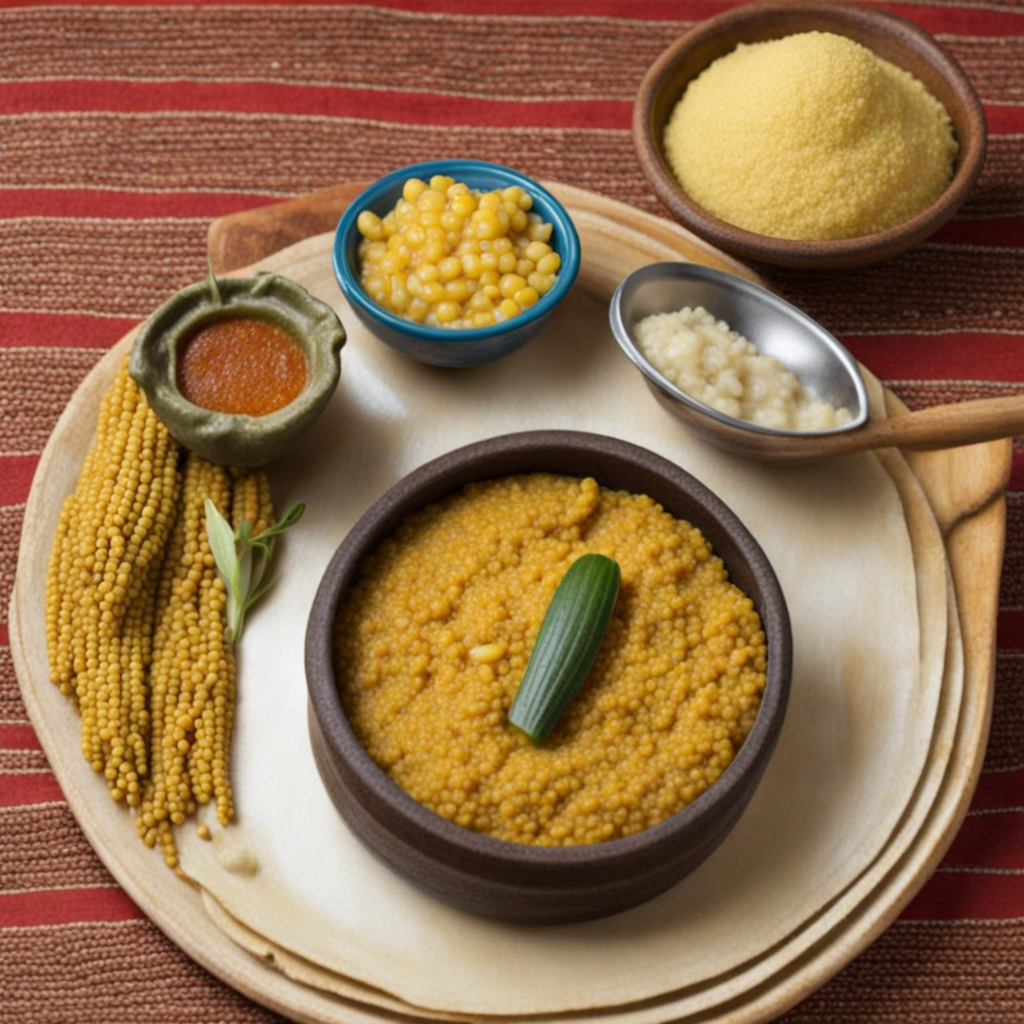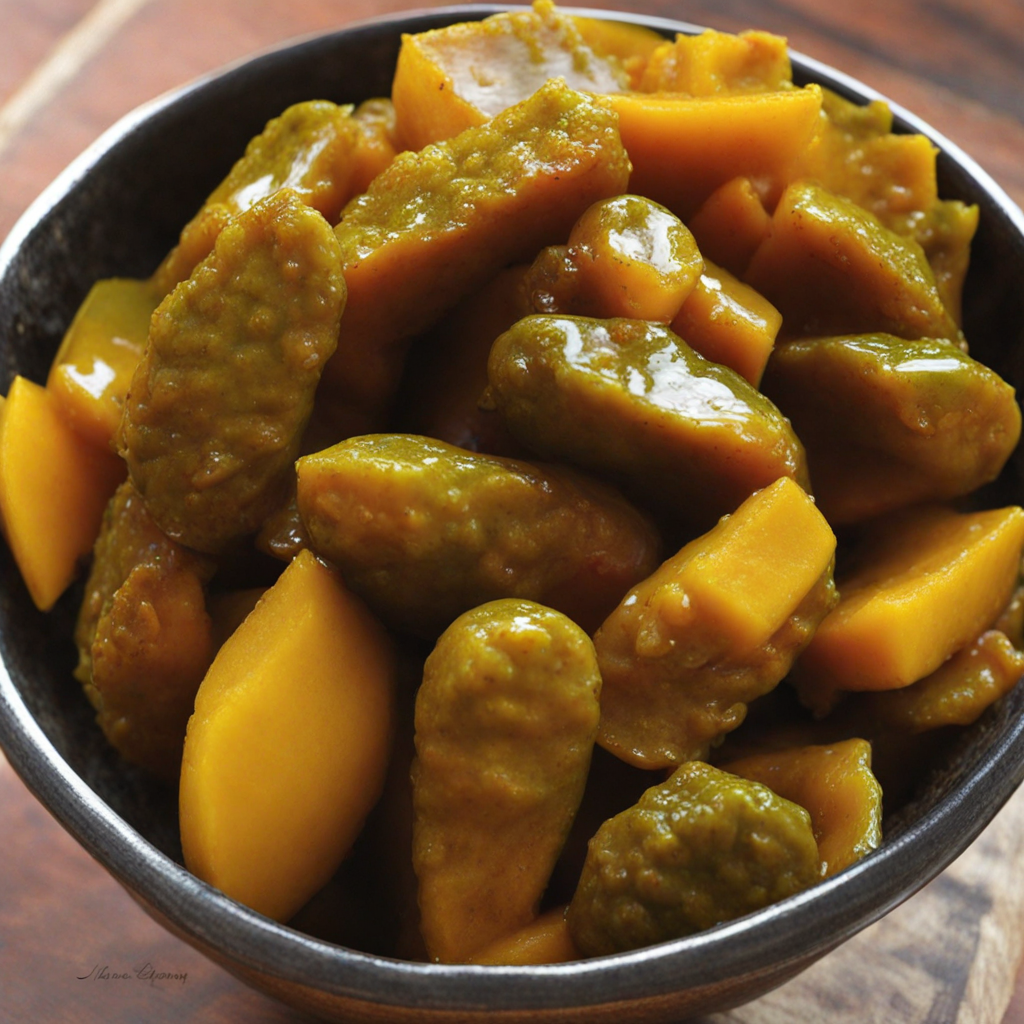Dégué
Dégué is a traditional dish from Burkina Faso that showcases the country's rich culinary heritage. At its core, Dégué consists of fermented millet or sorghum, which is skillfully transformed into a soft, creamy consistency that is both nourishing and satisfying. This unique texture is complemented by the addition of fresh milk, yogurt, or even a sweetened version with sugar, making it a versatile dish that can be enjoyed at any time of day. The fermentation process not only enhances the flavor but also adds a slight tanginess that is both refreshing and invigorating, making Dégué a delightful experience for the palate. One of the most endearing qualities of Dégué is its adaptability. While the base ingredients remain consistent, the dish can be customized with various toppings or mix-ins. Common additions include fruits like bananas or mangoes, nuts such as ground peanuts, or a drizzle of honey. These enhancements not only elevate the taste but also introduce vibrant colors and textures, making each serving a feast for the eyes as well as the taste buds. The combination of creamy, tangy, and sweet elements creates a harmonious balance that captivates those who are adventurous enough to explore this dish. Dégué is often enjoyed as a breakfast option or a light snack, reflecting the communal and family-oriented dining culture in Burkina Faso. It is a dish that brings people together, whether shared at home or during special gatherings. As you take your first spoonful, you’ll find that Dégué offers not just a taste of Burkina Faso, but also a connection to its people and traditions, making it an essential culinary experience for anyone looking to expand their food horizons.
How It Became This Dish
Dégué: A Culinary Gem of Burkina Faso Introduction Dégué, a traditional dish from Burkina Faso, has become a symbol of the country's rich culinary heritage. This dish, primarily made from fermented millet or sorghum, is often enjoyed as a snack or a dessert, showcasing the ingenuity and resourcefulness of the Burkinabé people. Its delightful, tangy flavor and creamy texture make it a cherished staple, but its significance goes beyond mere sustenance; it embodies the cultural and historical essence of Burkina Faso. Origins The origins of Dégué can be traced back to the agricultural practices of the people of the Sahel region, where millet and sorghum have served as staple crops for centuries. These grains are well-suited to the arid climate of Burkina Faso, making them integral to the local diet. The fermentation process that gives Dégué its unique taste is believed to have been developed by the early inhabitants as a method of preserving their grain-based foods. Fermentation is a time-honored practice in many African cultures, and in Burkina Faso, it serves both practical and cultural purposes. The process not only enhances the nutritional value of the grains but also introduces beneficial probiotics, which aid digestion and promote gut health. This method reflects the broader African philosophy of utilizing natural processes to enhance food, a practice that has been passed down through generations. Cultural Significance Dégué holds a special place in the hearts of the Burkinabé people and is often associated with communal gatherings and celebrations. It is traditionally prepared during important events such as weddings, naming ceremonies, and festivals, where it is served to guests as a gesture of hospitality. The act of making Dégué is often a communal affair, bringing families and friends together in the kitchen, fostering social bonds and shared experiences. In addition to being a communal dish, Dégué is also a testament to the resilience and creativity of the Burkinabé people. In a country that has faced numerous challenges, including droughts and food insecurity, the ability to transform locally available ingredients into nourishing meals is a point of pride. The dish exemplifies the sustainable practices of the Burkinabé, who have learned to adapt their culinary traditions to the resources at hand. Preparation and Ingredients The preparation of Dégué typically involves several steps. The primary ingredient, millet or sorghum, is soaked in water to initiate the fermentation process. After a couple of days, the grains are ground into a fine paste, which is then mixed with water and left to ferment for an additional period. The duration of fermentation can vary, depending on personal preferences and local customs. The result is a thick, creamy mixture that has a slightly sour flavor. Once the fermentation is complete, the mixture can be sweetened with ingredients like sugar, honey, or fruit, and is sometimes flavored with spices such as vanilla or cinnamon. Dégué can be served chilled or at room temperature, often garnished with nuts or fruits for added texture and flavor. While the traditional preparation relies on millet or sorghum, modern adaptations of Dégué have emerged, incorporating other ingredients such as yogurt or milk to create variations of the dish. This evolution reflects the ongoing dialogue between tradition and innovation in Burkinabé cuisine. Development Over Time As Burkina Faso has undergone social and economic changes, so too has the practice of preparing and consuming Dégué. The influence of globalization and urbanization has introduced new culinary trends and ingredients, leading to a diversification of the dish. In urban areas, for example, pre-packaged versions of Dégué can be found in markets, making it more accessible to those with busy lifestyles. These modern adaptations, while convenient, often lack the depth of flavor and cultural significance of the traditionally prepared dish. Despite these changes, Dégué remains a beloved dish in both rural and urban communities. It serves as a reminder of the importance of preserving traditional foods amidst the shifting culinary landscape. Local chefs and food advocates are increasingly recognizing the value of promoting traditional dishes like Dégué, not only to celebrate their cultural heritage but also to promote sustainable agricultural practices and food security. Moreover, Dégué has gained recognition beyond Burkina Faso's borders. As the global interest in African cuisine continues to grow, food enthusiasts are beginning to explore the unique flavors and cultural narratives behind dishes like Dégué. This newfound attention has the potential to elevate the status of Burkinabé cuisine on the international stage, fostering a greater appreciation for its culinary traditions. Conclusion Dégué is more than just a delicious dish; it is a reflection of the history, culture, and resilience of the Burkinabé people. Its origins in the agricultural practices of the Sahel, its role in communal gatherings, and its adaptability to modern culinary trends all contribute to its significance. As Burkina Faso continues to navigate the complexities of a changing world, Dégué remains a steadfast symbol of identity and heritage, bridging the past and the present. Through the ongoing appreciation and revitalization of Dégué, there is hope for the preservation of Burkina Faso's rich culinary traditions. As people around the world come to understand and embrace the unique flavors of this dish, they also gain insight into the stories, struggles, and triumphs of the Burkinabé people—a testament to the power of food as a vehicle for cultural expression and connection.
You may like
Discover local flavors from Burkina Faso


